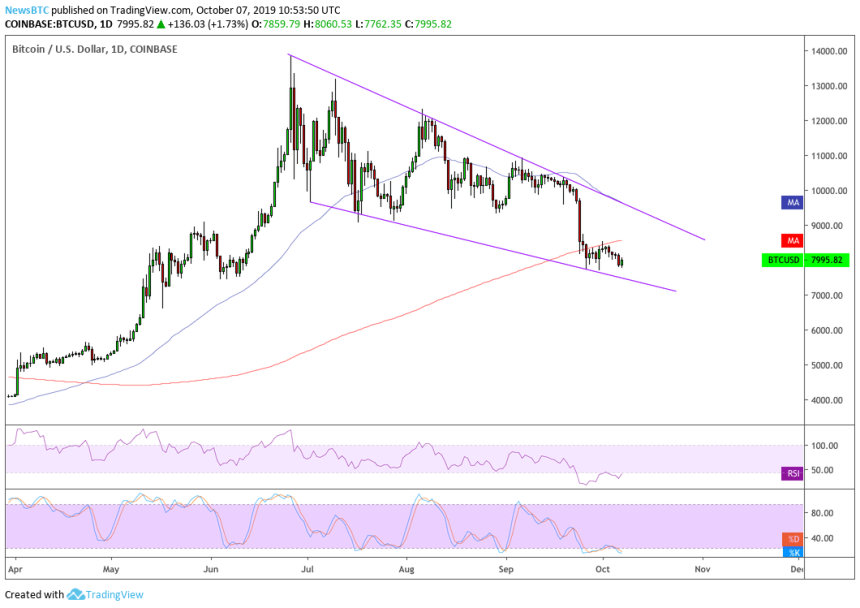Reason to trust

How Our News is Made
Strict editorial policy that focuses on accuracy, relevance, and impartiality
Ad discliamer
Morbi pretium leo et nisl aliquam mollis. Quisque arcu lorem, ultricies quis pellentesque nec, ullamcorper eu odio.
Bitcoin returned to form on Monday as investors analyzed the possibility of an extended trade war and weak European economic data.

The benchmark cryptocurrency was trading 1.73 percent higher – at around $7,995.82 – as of 1053 UTC. It spiked particularly after the beginning of the European session that, in turn, wavered against mediocre industrial data from Germany. The upswing also followed a bad market opening of US futures and China’s yuan, both of which fell earlier during the Asian session as Beijing hinted a no-broad deal with the US.
Trade Pessimism
Trade negotiators will reinitiate talks in Washington from October 10. The US side has indicated that it wants a broad deal, which includes pledges on changing Chinese industrial policy or the government subsidies, but its Chinese counterparts want to keep the issues out of the negotiations.
“The US has indicated that it wants a broad-based deal. Nothing is yet in the bag, and optimism on trade has proved time and again to be misplaced,” economists at ING wrote.
The move has jittered investors’ sentiment further, especially after the last week’s poor manufacturing and mixed jobs data from the US. Analysts now expect the Federal Reserve to announce new rate cuts to ease the market sentiments as chairman Jerome Powell scheduled to announce his take on the worsening economic conditions.
Global mkts edge up following Goldilock US jobs report but caution seen on trade talks. China officials signal they’re reluctant to agree to a broad trade deal pursued by President Trump, ahead of negotiations this week. Bonds gain w/US 10y yield at 1.52%. Gold 1505, Bitcoin <$8k pic.twitter.com/TbRejzwrVh
— Holger Zschaepitz (@Schuldensuehner) October 7, 2019
“The jobs numbers were not so bad that they are signaling an imminent contraction for the US economy, yet were weak enough to reinforce the view that the Fed will be forced to cut rates and to do so aggressively,” ING’s strategists said.
Road to Bitcoin
Bitcoin during the previous financial quarter decoupled itself from the US-China trade dispute. While fluctuating views kept investors confused about a definite outcome, bitcoin remained in a corrective fall, plunging by as much as 44.47 percent from its YTD top. Bulls still believe that the cryptocurrency would continue the price rally that saw it soaring by more than 150 percent in the second quarter.
https://twitter.com/gernot_lechner/status/1181164906512621569
Nevertheless, some reports see the interest dwindling. Crypto researchers at the TIE noted that institutions are not investing in bitcoin anymore. They backed their claim with the low physically bitcoin futures volume at Bakkt, an underperforming Grayscale Bitcoin Trust’s GBTC, as well as lesser use of terms “institutions” and “bitcoin” in the news reports.
Mentions of institutional interest in Bitcoin in news headlines have plummeted to a 2019 low after seeing significant growth throughout the summer.
Data from over 85,000 unique publication headlines collected since October 2017. pic.twitter.com/3JqHEpIAF8
— The Tie (@TheTieIO) October 2, 2019
As of the time of this writing, bitcoin had broken above the psychological resistance of $8,000, up 1.87 percent from Monday’s open.





















